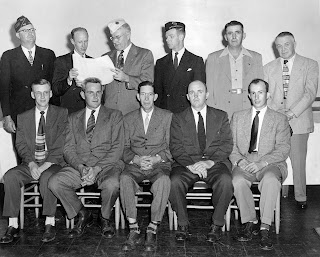The Letter from Arkansas
Three things cannot be long hidden: the sun, the moon, and truth. -Buddha-
_______________
Set forth below is the November 2016 account by Mary Linda Winstead Janke of her family's search for a long-lost relative, Elijah Jacobs/Elephelit Coleman:
_______________
 |
| Elijah Jacobs/Elephelit Coleman |
Fort Smith, Arkansas, March 9th 1860 To The Post Master at Yanceyville, N Carolina
Dear Sir. Some time in December last a gentleman by the name of Benjamin Jacobs came to this place in company with his wife Catherine Jacobs and an infant son Elijah Jacobs. He had two Negro Boys with him as I understand and stayed with a man by the name of Samuel Edmondson, alias Ginger. Soon afterwards himself and wife was Boath Taken Sick and died. I am almost certain there was Foul Play. I think they was Poisoned. This Pious old Ginger took the Negroes off and sold them.
I had taken out Letters of administration on the Estate of the Said Jacobs and yesterday I called on Edmondson for the Purpose of Taken an Inventory of the Property and find Nothing But two trunks of Clothing and one watch. I find the Deguaritipe of Some Friend of theirs. I learn the lady Said it was her Brother. I have that and a lock of the lady's hare. Edmondson has a bill of sale for the Negroes but I am Certain it was forged. Because if he had bought the Negroes and paid for them there would have been money on hand. There was not a Dollar.
I have hired a nurse for the infant. I find a receipt for Eighty Dollars in a bill of Sale from E. Jacobs to Benjamin Jacobs for a Negro Boy aged about 14 years which I suppose must have been one of the Negroes Sold By Edmondson. What induced me to write to you is I find the Envelope of a letter that was mailed at Yanceyville, N.C. To Benjamin Jacobs, Dubuque, Marion County, Arkansas and from that infer there must be Some of the Relatives of himself or wife in that Country. Please find out if you can and inform me Immediately. I will do the best I can for the Child So help Me God.
Farewell Please attend to the above and if you find any of the Friends let them Correspond with me Immediately.
H. L. Holleman
Fort Smith Ark.
_______________
This letter, written in a strong, even, script, has been passed down in my family for 155 years. Its watermarked paper has darkened from the original cream to tan; the ink has faded from black to brown. Written on one sheet of paper, back and front, there was once an envelope where it rested between perusals. That is long gone, but the letter and its poignant message remain. It has been read so many times that the paper has given way in the folds; read over and over to see if maybe, this time, there will be something new to be discovered, something missed before. Long ago my grandmother mended these separations with cellophane tape so that no precious part of it would be lost.
Always, when someone reads it for the first time, they ask the same question: "What happened to the child?"









































